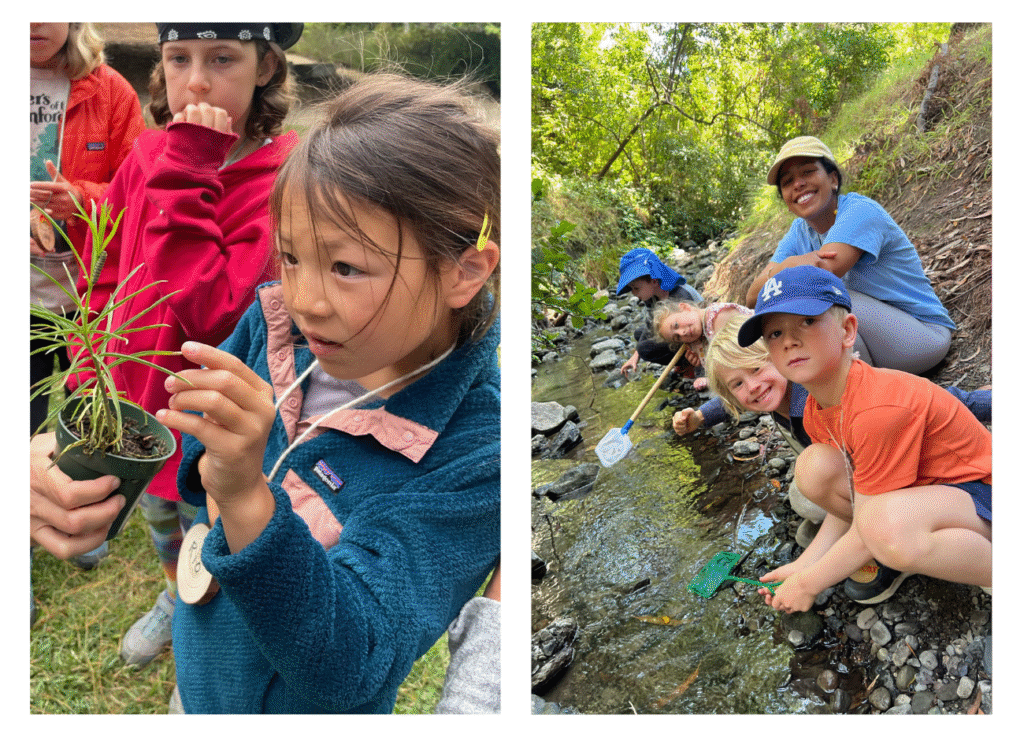Hands-On Science at Summer Camp
At KIDS for the BAY, we believe that Everyone Is a Scientist and an Environmentalist!
Our campers had many exciting opportunities to engage in hands-on science experiments and investigations this summer! KftB Summer Camp empowers campers to think critically about the natural world, practice their observational skills and the scientific method, and engage with local watershed habitats as a living laboratory for learning, all while having fun in nature!
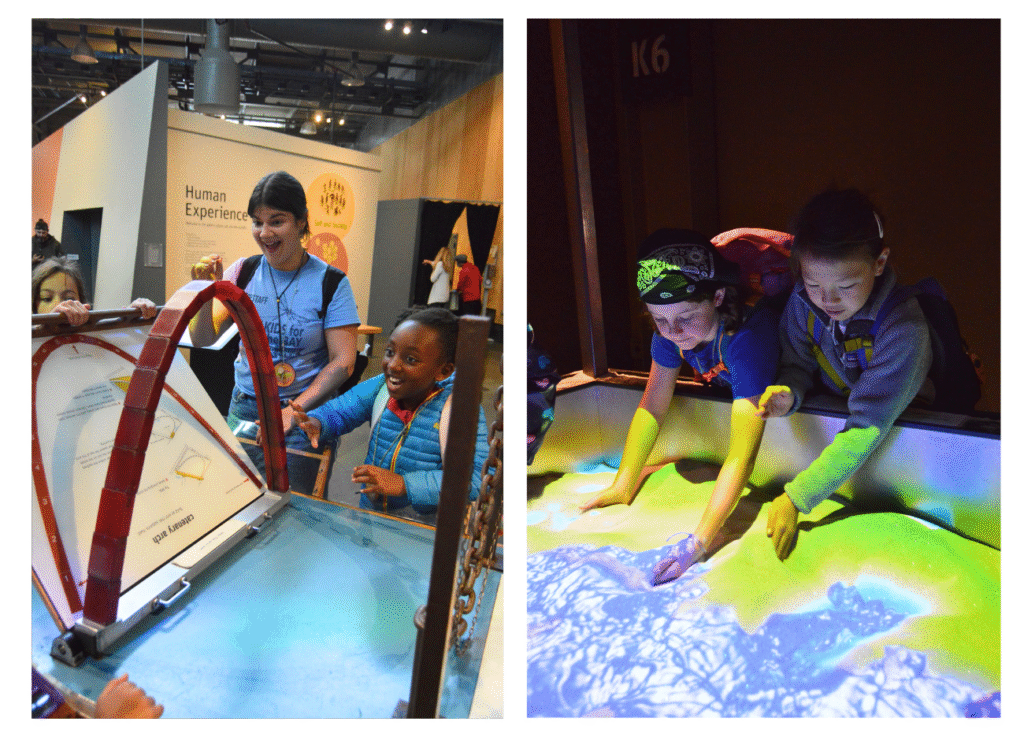
Campers exploded model volcanoes, hatched dinosaur eggs, learned about butterfly lifecycles and made butterfly baths, created craft fossils and animal tracks, learned about Galileo’s Drop at the Campanile clock tower at UC Berkeley, and defined pathways in the model watershed at Lawrence Hall of Science. During a special BART field trip to the Exploratorium in San Francisco, campers experimented with light, shadow and energy, played with magnetic sand, interacted with an indoor ‘tornado’ and built their own weighted catenary arch.
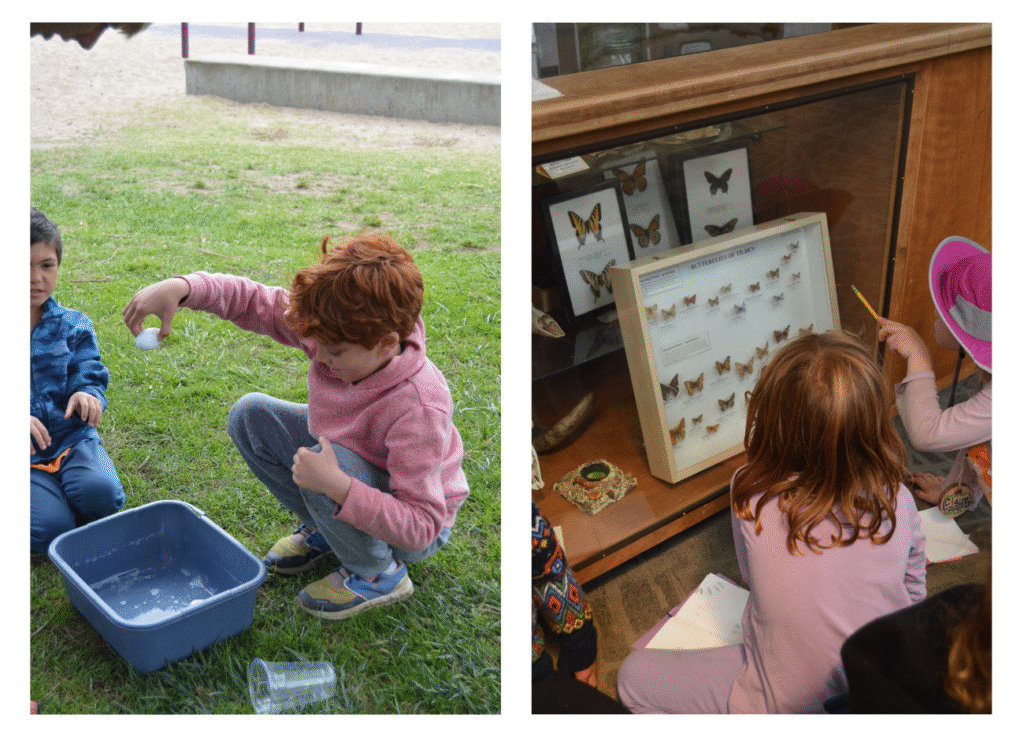
To further explore the local watershed, campers learned about migratory fish in California and investigated steelhead trout scales. To learn about the pH scale and to better understand how our reliance on fossil fuels is changing the chemistry of the ocean, students created a Tiny Ocean and added drops of lemon juice to the solution to make it more acidic. Our Environmentalists also added substances of varying acidities to a TUMS tablet to observe how ocean acidification is harming shelled organisms that rely on calcium carbonate to build their exoskeletons.
Campers had the exciting opportunity to dissect squid to learn more about this unique organism’s anatomy and adaptations. “Why do you think scientists dissect things?” asked KIDS for the BAY Camp Leader Neda Ibrahim. “Scientists take things apart to learn more about them, to understand how their bodies work or to see how they lived,” suggested Olivia.
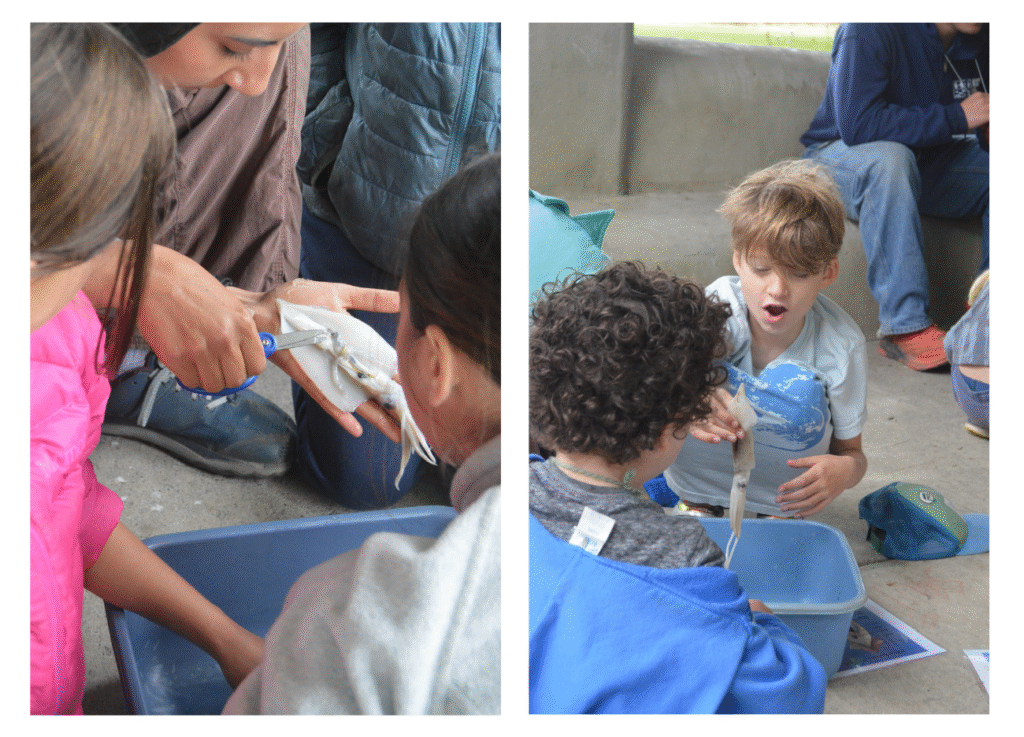
Ms. Neda kicked off her squid dissection demonstration by asking campers to identify different parts of the squid’s body, including its eyes, mantle, beak, arms, and tentacles. “I found eight arms on my squid and two longer ones called tentacles, which have suction cups! I think squid can reach out and grab prey with their long tentacles,” observed Miro. “Yes, that’s right! Did you know that squid are cephalopods, just like octopuses and cuttlefish?” continued Ms. Neda. “The word cephalopod translates to head-foot–describing how the animals’ eyes sit just above their many arms and tentacles or feet. Another interesting fact is that squid have the largest eye-to-body ratio of any organism on Earth.” Zelda responded, “I think that’s because they live in deeper areas in the ocean, where it’s darker.”
Ms. Neda showed the young scientists how to stimulate the squid’s slippery skin with their index fingers to study the chromatophores. “Squid have color cells, called chromatophores, that can produce different colors and patterns. They are visual communicators, which means they change their physical appearance, like the color of their skin, to express themselves. Why might this be a helpful adaptation?” asked Ms. Neda. “It helps the squid camouflage or ward off predators!” said Parker. “It could also help the squid communicate with one another and find a mate,” shared June. “The chromatophores on my squid get darker when I touch it!” observed Toby.
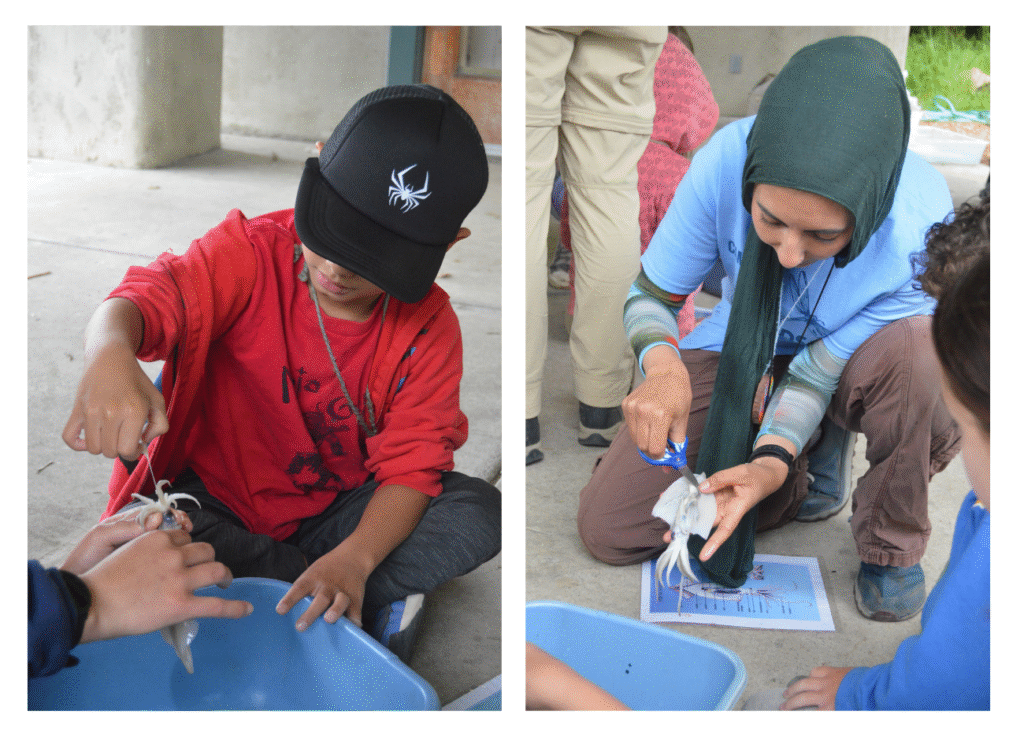
Campers worked in groups to make a cut along the squid’s mantle from waterjet to fins. They gently opened the mantle to expose the internal structures, including the esophagus, stomach, and gills. Campers also had the opportunity to remove their squid’s quill, which supports the soft body, and to use the ink inside the squid’s ink sac to draw and write their names. They also removed the squid’s powerful beak, and investigated the lens of the squid’s eye. Ms. Neda encouraged campers to identify if their specimens were male or female by observing differences in the gonads, or sex cells. “I think this squid is male!” shared Raven.
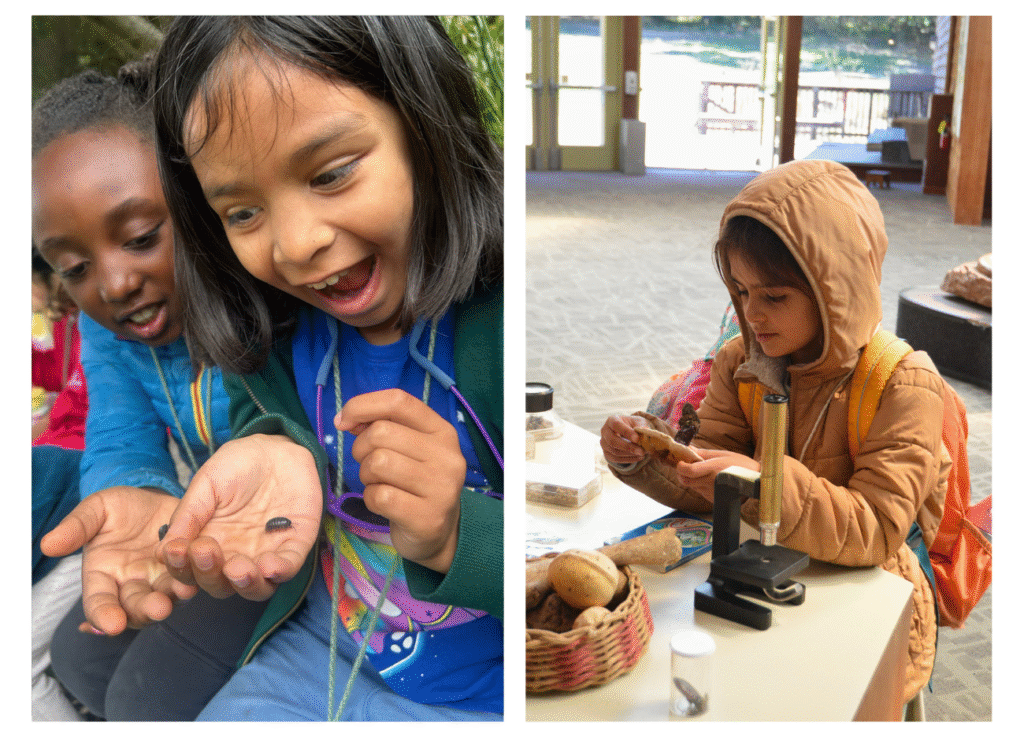
Our campers approached their squid dissection and all their other environmental science camp experiences as true scientists, investigating, observing and making hypotheses. KIDS for the BAY is committed to developing the next generation of empowered scientists, Environmentalists, and watershed stewards through our school-based programs and our Summer Camp. Our young scientists and Environmentalists enjoyed countless opportunities for meaningful, place-based science learning in the watershed ecosystem this summer. See you next summer, KIDS for the BAY scientists!
